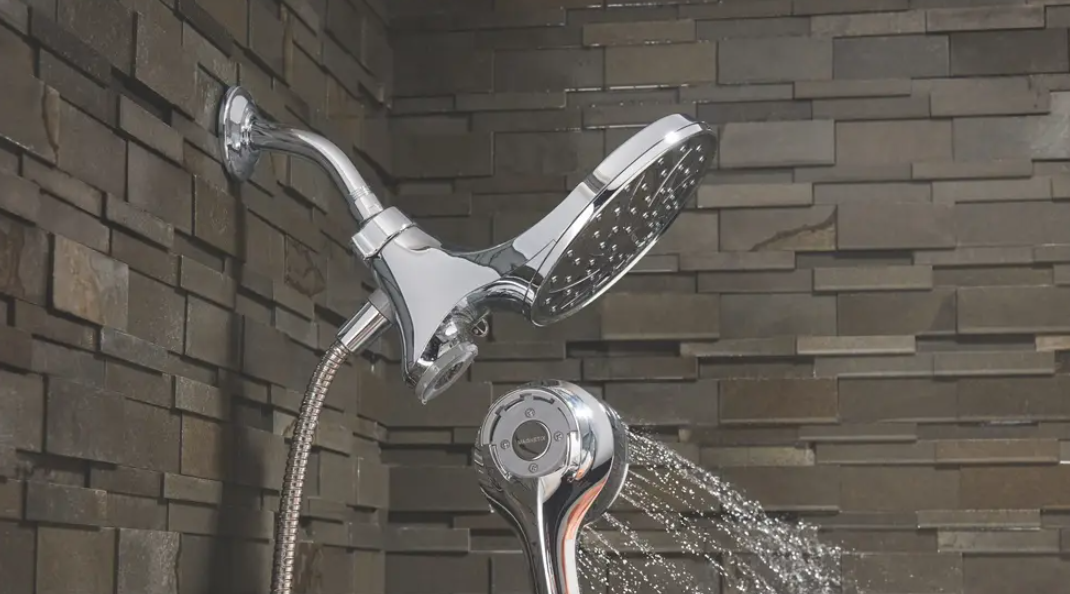A larger showerhead will have more pressure than a smaller one. This is because it has more water flowing through it. The size of the showerhead does not affect the pressure of water that comes out. It only affects how much water comes out at one time.
A large high pressure shower head may not be as comfortable to use as a smaller one; though it will give you more pressure, there will be a reduced coverage. If you want to wash your hair, then a large showerhead may be ideal for you because it can reach all areas of your hair easily.
If you want to feel like you’re getting a massage in your shower, then a small head will give you that feeling because it covers a smaller area. The small showerhead will, therefore, wash over any part of your body quickly enough to make you feel like you just got shampooed!
What Causes a Handheld Showerhead to Lose Water Pressure?
Water pressure is the amount of force the water exerts against your skin when you shower. The higher the pressure, the better it feels. Most handheld showerheads have a maximum flow rate of 2.5 gallons per minute (GPM).
The most common reason for losing water pressure in your shower is because of sediment building up inside your pipes or plumbing fixtures. Sediment causes clogs that reduce the flow rate, which reduces available GPM from your faucet or showerhead.
Other causes include:
Plastic fittings. If your showerhead has plastic parts, the water pressure will be lower than if it had metal parts. Plastic parts are less durable and don’t withstand high temperatures as well as metal parts do.
Clogged nozzles. Over time, mineral deposits can build up inside of your showerhead’s nozzles. These deposits restrict the flow of water through the nozzle holes, which may cause your handheld showerhead to lose water pressure. You can clean out these deposits by using vinegar or CLR (calcium, lime and rust remover).
Old or worn-out rubber washers. Rubber washers should be replaced every two years or so because they wear down over time due to exposure to heat and chemicals in the water supply system. This causes them to become less flexible and thus less effective at preventing leaks at the connections between the shower hose and its various components (such as the wall-mounting bracket). If you notice drips coming from between any of these connections when you take a shower or make use of your handheld showerhead, it’s probably time to replace your rubber washers with new ones.
The flow restrictor is clogged up with mineral deposits from hard water. Most handheld showers come equipped with flow restrictors that prevent users from wasting too much water while they’re rinsing off in the shower or tub. The flow restrictor tends to hold up some volume of water to limit excessive usage. As a result, the trapped water deposits minerals and particles at the restrictor. When this happens frequently, the particles accumulate and clog the flow restrictor pores.
Conclusion
So, the short and sweet of it is that showerheads do affect pressure over time, regardless of what the manufacturers might say. What this means for you is that, provided you have a high-end showerhead, you should be able to achieve a nice strong pressure even if you have a lower water flow rate. Of course, it’s still important not to use too much force when showering to avoid scalds and other potential accidents. If you, however, feel you need a high-end shower head, visit decline shower heads for some of the best showerhead prices.
